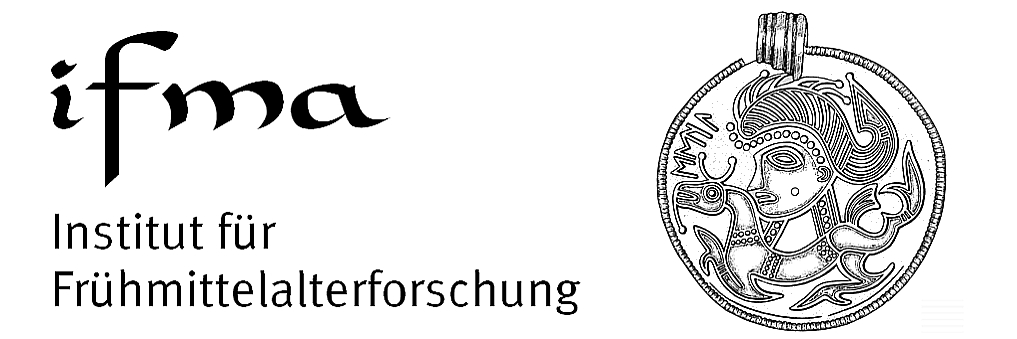
TMR 94.01.03
Bois, Guy, The Transformation of the Year One Thousand. The Village of Lournand from Antiquity to Feudalism. Translated by Jean Birrell, Preface by George Duby. Manchester: Manchester University Press, 1992 . Pp. 177. ISBN 0-7190-3565-1.
Reviewed by Peter B. G. Shoemaker, Brandeis University.

his work, undertaken as a micro-history, is a study of the socio-economic revolution that brought the downfall of the ancient world and the birth of feudal Europe. George Duby's 1953 thesis of a feudal revolution examined the rupture in the political and ideological structures of the millenarian west. He chronicled a change from allodial to tenant based land holding and the reconceptualization of the divisions within society from a slave/free duality to the well known tripartite structure of those that work, those that fight, and those that pray. Guy Bois draws heavily on this thesis and that of Pierre Bonnassie. Bonnassie has argued persuasively that slavery persisted throughout the early medieval period, collapsing only around one thousand as economic, political, and religious forces conspired to bring about its demise. Bois uses a study of the village of Lournand in an attempt to not only confirm these findings on the small scale but to suggest an intriguing thesis concerning the dialectical role of economy and society in the revolutionary process.
Much of what this book attempts to do is present an alternative, and more accurate, view of productive relations during the period between the Germanic invasions and the first millennium. Traditional interpretations have seen feudalism arising out of the imposition of Frankish authority on the West, and Carolingian estate records have been used to prove the existence of early feudal relations. While Bois does not discount this evidence, he does argue against the global conclusions drawn from the polyptyches. Arguing that such a situation only existed on the great estates themselves, Bois sees this evidence as having little to do with the greater part of the medieval west.
Bois choose Lournand because of Cluny's cartulary (only about 4 kilometers away) and the relative remoteness of tenth century Lournand from any large settlement (Mâcon being the closest at 30 kilometers). For Bois this assures both superb documentation and the possibility of representativeness. Also important for Bois' thesis is the role of Cluny in the European feudal transformation. It is through a micro-historical approach that Bois feels assured of getting to the core of change in the period.
Bois begins with a discussion of slavery in the early medieval west, and sees Lournand as representative of villages throughout the region. Bois finds that there is no evidence in the cartulary for the status of serf, only that of freeman and slave. With the cartulary showing around 15% of the population as slaves in the period 935-1022, a number far too few to occupy the central role in production, Bois claims the slaves served as prestige items for the upper level of the freeholders, the masters. Unlike Bloch, Bois sees no decline in slavery only an "upgrading" -- a change in function but not status. After establishing the existence of slavery in Lournand well into the nine hundreds, Bois turns to an examination of social structure.
The ancient social structure -- the one functioning in Lournand until around the 980s -- was one of citizen landowners, theoretically equal to one another. Bois correctly identifies this conceptual fiction and discusses what he calls, "the hierarchy of the free". This hierarchy established an effective wall between the upper and lower levels of the free. Power among the masters was dependent on the ability to reproduce one's social status and hegemony. This was only possible when proximity to the power of the count or bishop was assured. On a side note, this division amplified the process of marginalization of the lower freemen as the military obligations were modified to the benefit of those with money, thereby removing from the "lower" class another opportunity for participation in public life.
Building up to the rupture, Bois turns to trade, where he sets the ancient forms of economic relations against the new forms, and asserts that the transition from the old (ancient) to the new (feudal) was one of the most critical events of the period. Lournand was too far away from the regional center to engender any sort of economic benefit. The town/country relations, like in the ancient world, were really nonexistent. The new, feudal model came after the founding of Cluny. Cluny quickly assumed an urban character, becoming a focal point for the surrounding area. For the first time, there was an accessible market, and a supportive public institution near Lournand. Soon, the market began to regulate the economy and coinage began to make its way into the roots of rural society. "A common dialectic of development" existed between Lournand and Cluny, permitting an irruption of the economy.
Next, Bois examines the engines that drove the economy's liberation and looks at the phenomenon of agrarian growth, finding that development both on the qualitative level (technological) and on the quantitative level (increase in cultivated area) was basically over in the region by the year one thousand. This thesis of precocious growth is based on demographic evidence (a population of around 40 inhabitants per square kilometer at the beginning of the tenth century with only a 50% increase by thirteen hundred, hardly compatible with the thesis of an explosion just prior to 1300), water wheels, mills, place names, and aerial photography. Bois concludes that this evidence, combined with an analysis of the social aspects of growth (the appearance of the conjugal farming unit, land development, and the general collapse of Roman political structures) reveal a pregnant agricultural sector in the late nine hundreds.
The revolution began with Cluny. The slaves had served on the lands of the masters, and the allodial sector had managed to feed itself away from the niceties of a city. Beginning in the late 960s, Cluny changed all this. Cluny presented to the citizens of Lournand an option to the masters and the vagaries of the court in Mâcon. Beginning in the 950s there was an explosion in the land market that serves to illustrate the change. In the earlier parts of the century, land was rarely sold (19% of transactions), by the period 950 to 980 sales were up to 41% of all transactions, by 980 sales were around 32%. During the same last two decades of the tenth century, donations to the monastery shot up to around 51% of all transactions. For Bois this is yet another example of the great change that the unleashed market caused. It was better to give your land to the monastery and continue to live on it then get burned in the land market. Cluny was simply indicative of a European trend that was similar if discontinuous, a new conceptualization of power, of politics, of economy, and of ideology. As is perhaps obvious, Bois sees the birth of tenancy and relations of dependence in this period, along with the birth of the market, the ideological change, and the disappearance, for economic reasons, of slavery.
The birth of the market circa 980 is, for Bois, the escape of the economy from ancient bonds. The ancient system held the economy in check through public institutions and macroeconomic policies. Town and country relations were essentially nonexistent, allowing no real market, and thus no money into the rural world. Family structures did not encourage individual economic advancement, as lands were constantly disintegrating and being reintegrated. Ties of dependence, both formal and kin, kept surplus at a minimum, with many allodial holders subject to tributary obligations. It was a world of clearly defined borders, with little opportunity of transgression.
The ancient system was dependent on public power, when that power finally collapsed in the 900s, then, and only then, could an autonomous economic sphere finally emerge in society. The masters depended on the public power for their hold on society. By themselves they lacked the resources to impose their will on their neighbors. Agrarian growth and the religious/economic force of Cluny and its sister foundations drove a deep and final wedge into ancient society. The result was a market economy that demanded a reconfiguration of society -- economy and society unbound. The feudal world was the revolutionary aftereffect of this event. The paradox, and Bois recognizes this, is that this freedom held within it new bonds, but these were the bonds of a new society, and a new world.
This book is well written, and the translation is superb. Bois' dialectic and discursive style makes for successful reading and comprehension. One question that does arise, however, concerns the representativeness of Lournand. While this sort of question is bound to come up in any attempt at micro-history, here it is blatant. One of Bois' reasons for looking at a village such as Lournand was to get away from the distorted views of social and agricultural development presented by the often studied Carolingian polyptyches. Lournand would provide an undistorted observatory for the changes Bois expected to find. While this holds perhaps until the middle tenth century, with the emergence of Cluny, all is changed. Unless Bois wishes to make the argument that by the year 1000 or so every village was within striking distance of an urban center (monastery or otherwise) then Lournand's representativeness is severely minimalized. Even keeping in mind the leading role Bois attributes to Cluny in generating the great transition, this study does no more than show the birth, in Lournand, of the feudal world. We are left with no idea of developments elsewhere. A much more convincing argument could have been made if this study had reflected a comparative approach. Knowing how Lournand stood up against another village in a different locale would be highly instructive and much more convincing. Further, it would have been interesting had Bois been able to look at the similarities between the ideological and productive structures of the Carolingian estates and those of Cluny after the 960s. If there existed a "feudal" model on these estates, then what role did they play, if any, in the feudal revolution Bois attempts to map out?
It is unclear how helpful this book ultimately will be to overturning the gradualist thesis, but the idea of an economy "held captive" by social and political forces is potentially very important. As a signpost to further studies, this is a book that deserves to be read, although with perhaps less grand aspirations than with which it was written.
The Medieval Review
The Medieval Institute, Western Michigan University
Distributor: Humanities Text Initiative


